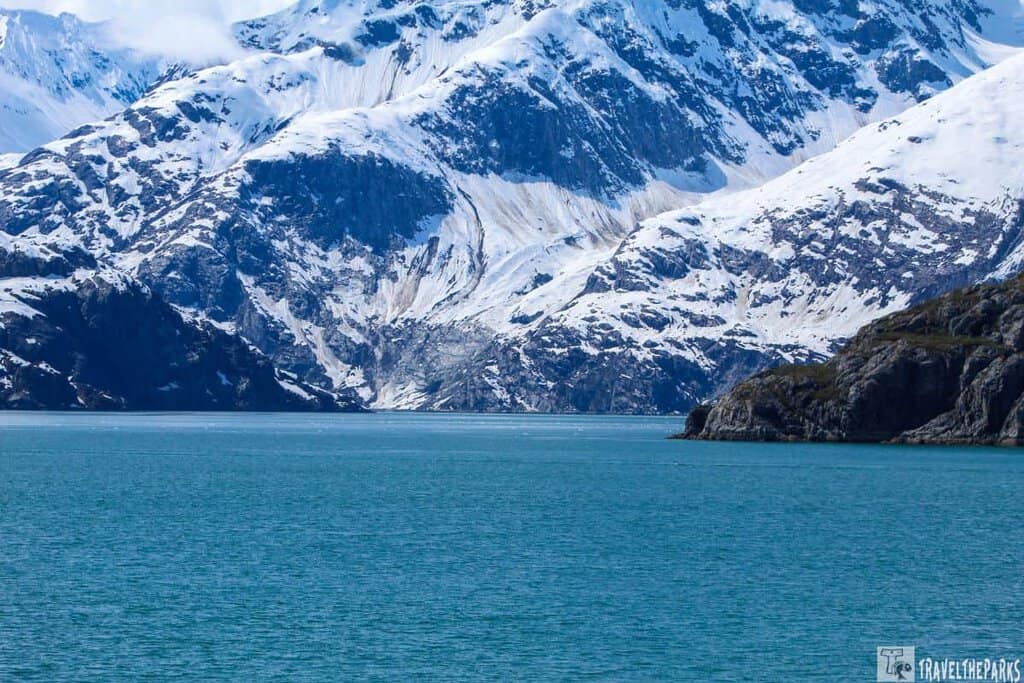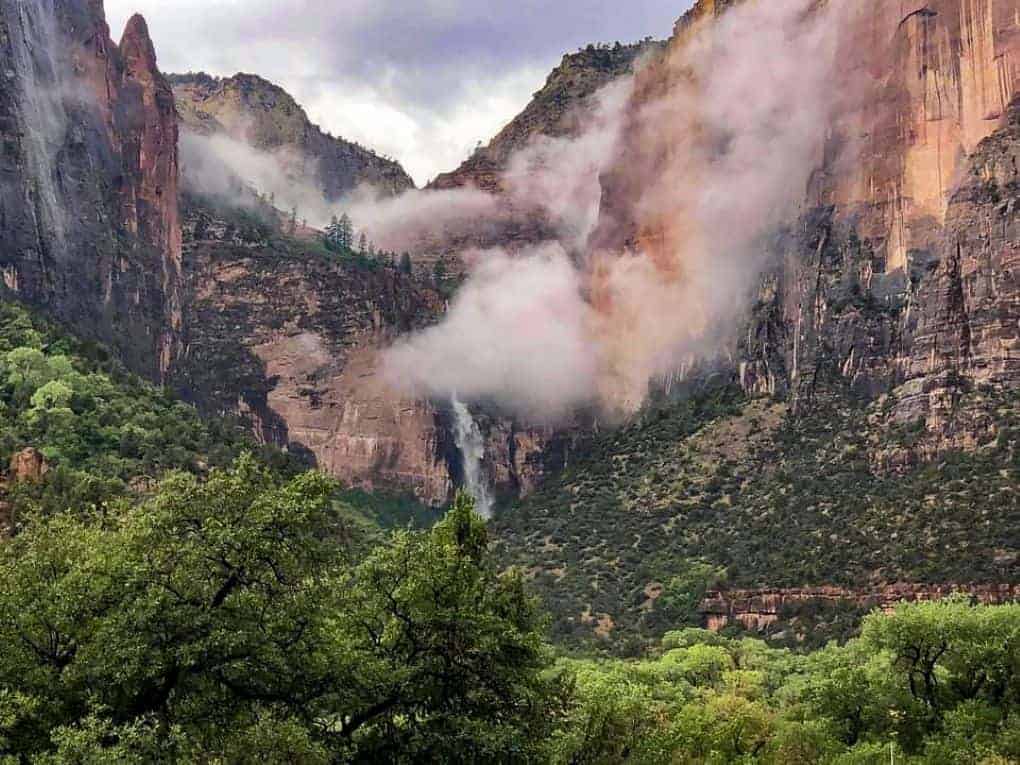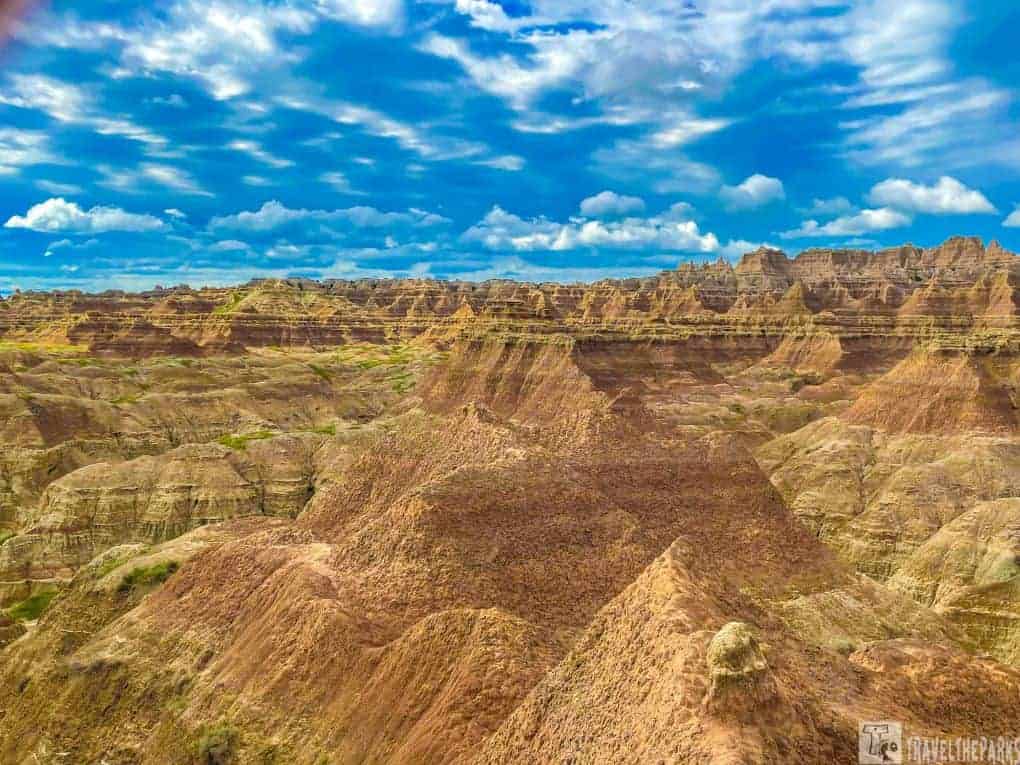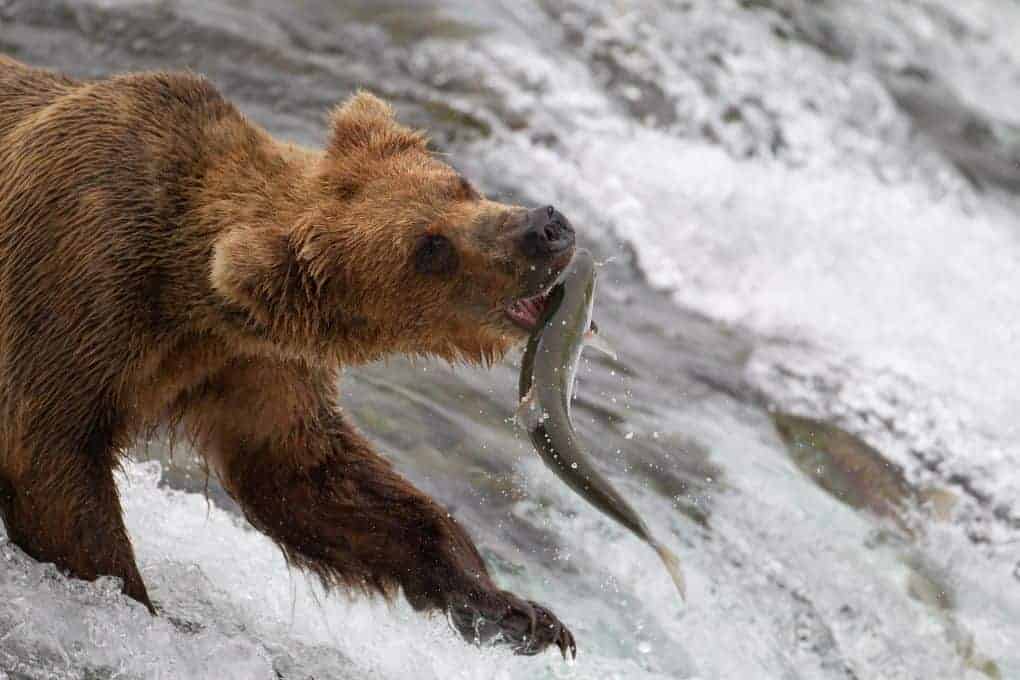Have you ever wondered what the ultimate cruise might be for Alaska? Come with us as we sail the awe-inspiring interior passage! Our seven-day cruise of the interior passage from Anchorage to Vancouver was an unforgettable adventure. Alaska is a destination in which towering glaciers and pristine wilderness paint a landscape unlike any other. On this journey through Alaska’s breathtaking crown jewel, we traded the ordinary for the extraordinary. This truly was the ultimate Alaska cruise of the inside passage.
This post may contain affiliate links, meaning if you purchase something through one of these links, we may earn a small commission at no extra cost to you! Read the full disclosure policy here.
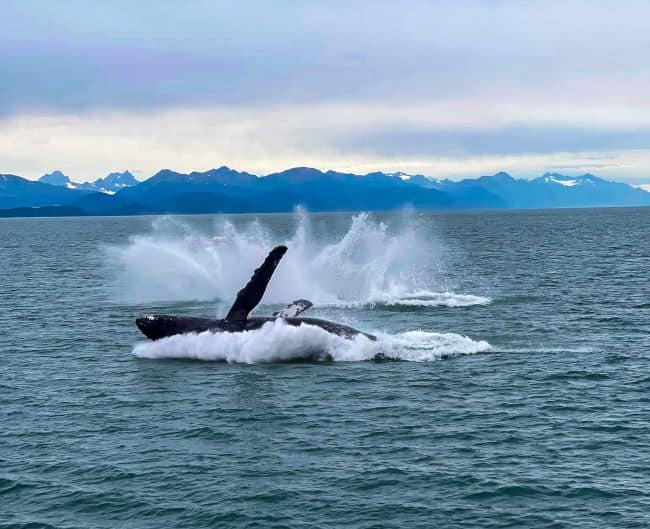
Table of Contents
Getting to Anchorage Alaska for Our Bucket-list Alaska Inside Passage Journey
Most Cruise passengers will fly into Ted Stevens Anchorage International Airport in Anchorage to start their journey. Give yourself at least a full day to travel to Alaska by air. Particularly for individuals who, like us, are traveling from the east coast. When you land, it is likely you have been travelling a 11 or 12 hour day. Usually getting there around midnight. We advise an overnight stay in Anchorage.
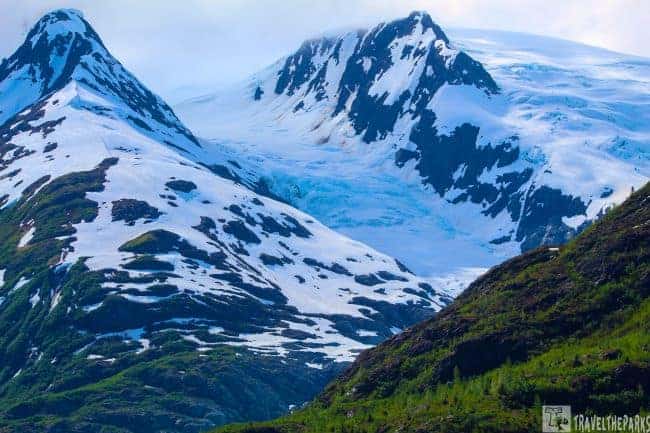
When is the best time to visit on an Alaska Inside Passage expedition cruise?
The best time to cruise Alaska is during the summer months, from late May to early September.
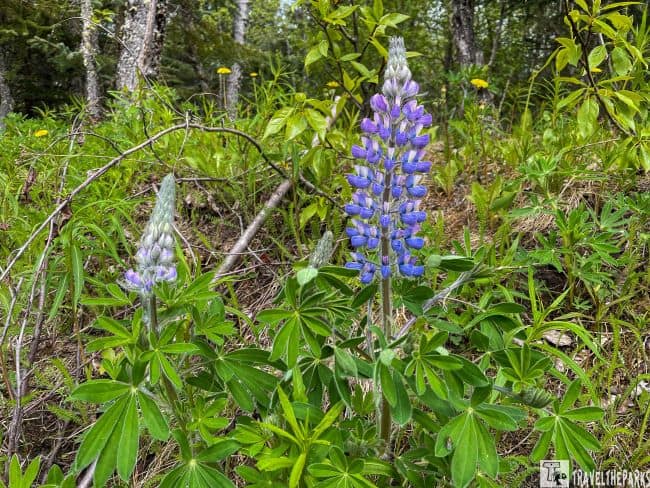
Inside Passage cruise: May-June Spring Season
Advantages of this season include reduced crowds in comparison to the busiest time of year. The arrival of spring is marked by the blossoming of wildflowers and lush green vegetation. Daylight hours are increasing as the days are getting longer. Chances of observing young animals like bear cubs and seal pups. Disadvantages: Cooler weather and possibility of snow are still present in certain regions. Slightly reduced likelihood of spotting whales compared to later on in the season.

Inside Passage cruise: July-August summer season
Advantages: The peak season boasts the highest temperatures, varying from the mid-50s to mid-70s (°F). Optimal time for observing wildlife, including humpback whales, orcas, and bears. All tours and attractions are operating normally. In June and early July, extended daylight hours, reaching up to 18-20 hours, are the norm. Disadvantages: increased costs and overcrowding at various destinations and ports caused by high tourist volume during peak season.
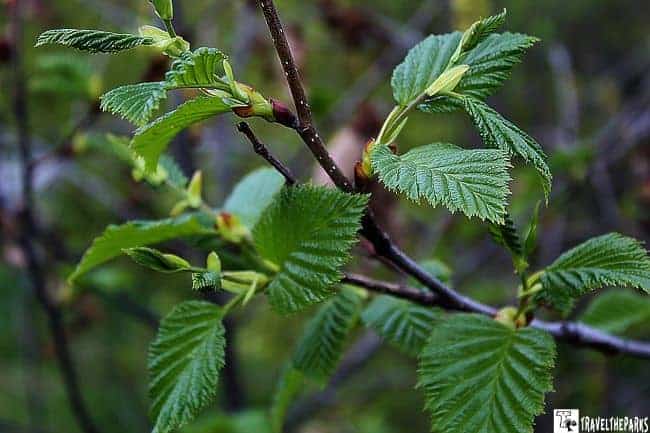
Inside Passage cruise: September-October fall season
Advantages: Gorgeous autumn leaves start showing up by late August and early September. The temperature is cooler, but the weather remains relatively mild. Fewer people and sometimes cheaper prices compared to high season. Possibility of witnessing the Aurora Borealis, especially towards the end of the month. Disadvantage: daylight hours decrease as the season comes to an end. Certain attractions and tours may begin shutting down for the season.
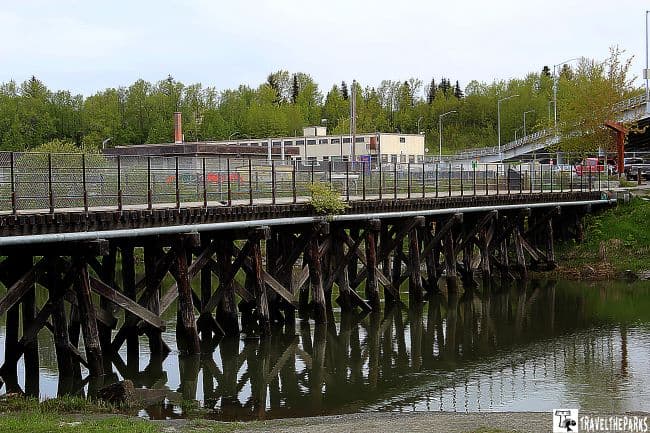
Beginning Our Inside Passage Cruise Journey in Anchorage
This was not our first trip to Alaska. Having a little hindsight, we opted to arrive in Anchorage a day early. Overnighting in the city would give us time to acclimate, leaving the jet lag behind. We also wanted to have a bit of time to explore the Anchorage Market & Festival. Alaska’s largest open-air market, it returned to downtown Anchorage this year, and we love perusing the stalls looking for that special Alaska token.
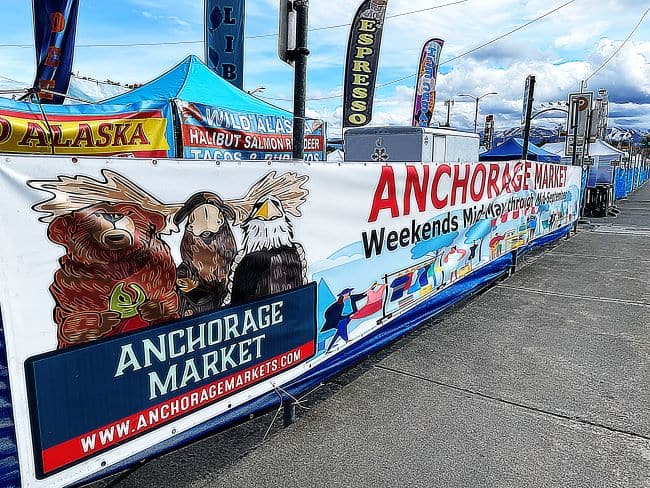
The market did not disappoint. Lots to see and do at this marketplace. There are now pony rides for the kids, and a few thrill rides too. Live music on the weekends makes a pleasant stroll of the vendor booths. What I love most about the marketplace is finding the perfect Alaskan gift. I highly recommend having the reindeer hot dog at Tiki Pete’s Alaskan Grill, as it had the best!
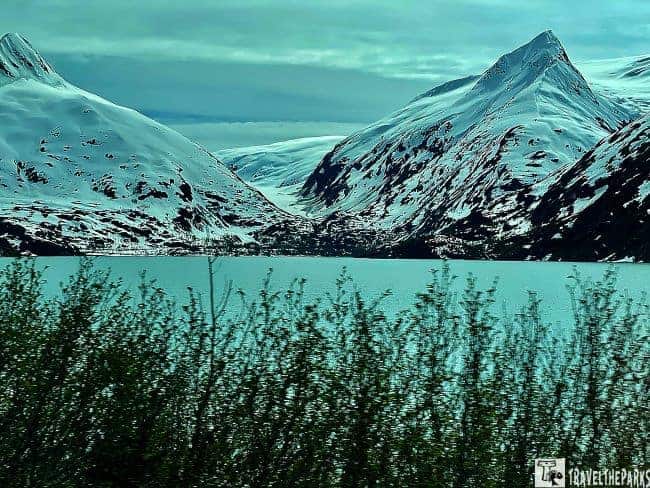
Cruise Experience Shuttle Bus to Whittier
The shuttle bus drive from Anchorage to Whittier is approximately 60 miles and usually takes about 1.5 to 2 hours. Anticipation builds as we take our seats. The route follows Turnagain Arm along the scenic Seward Highway. This highway, designated as an All-American Road and National Scenic Byway, is renowned for its magnificent views. We’ve done this highway a few times. We always love this drive, looking at the snow-covered Chugach Mountains and the tidal flats of the Turnagain Arm. I’m thrilled to finally experience the historic Anton Anderson Memorial Tunnel. Stretching 2.5 miles, it holds the title of the longest combined rail and highway tunnel in North America. Built during World War II, the tunnel provided the necessary access to the critical military supply port.
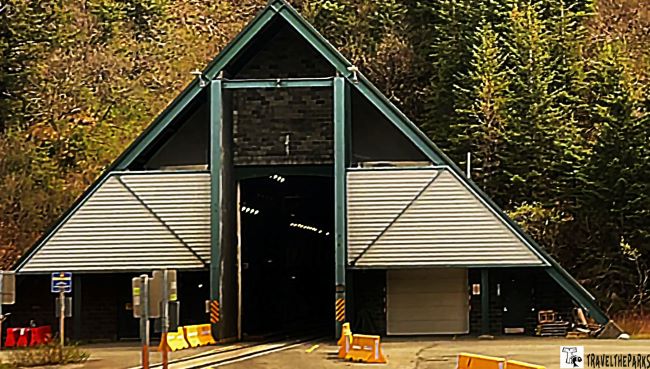
I have a front-row seat today to get my camera shots in. However, nothing can prepare you for exiting the tunnel. The view of Whittier and the backdrop of Prince William Sound are breathtaking. For our Holland America sailing on the Nieuw Amsterdam, the shuttle dropped us off right at the Whittier cruise ship terminal. In minutes, we were shipbound. We have just a few hours in Whittier before departing. Finding our cabin, our first priority getting lunch. We then begin the adventure of getting acquainted with the ship.
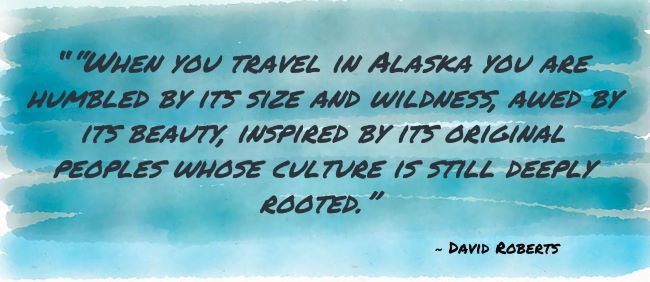
Day 1-Cruising from Whittier, Alaska
As the ship gets released from the dock, moving away, we can feel the cold, refreshing air against our faces. The vessel enters the serene waters of Prince William Sound. It is stimulating and contains the crisp smell of the ocean, with a touch of pine coming from the forested slopes. Waterfalls created by the snowmelt cascade down the mountainsides.
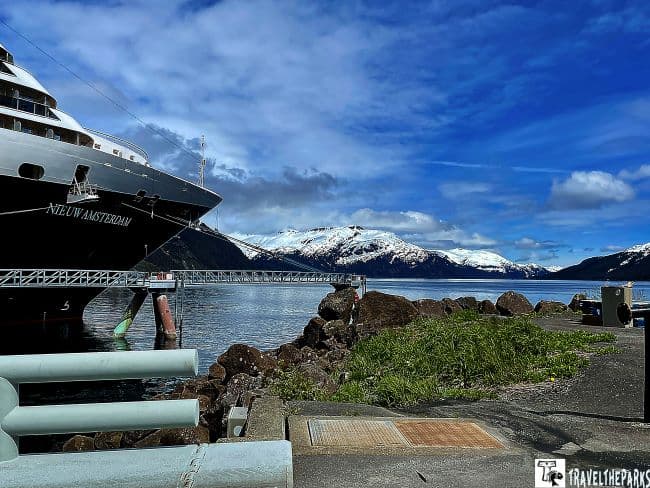
As the ship moves farther from Whittier, the bay widens, showing a vast area of thick woods along the coast. We are on the lookout for wildlife. Sea otters are often the first animals to be spotted, joyfully floating on their backs. At times, you can spot orca groups with distinctive patterns. If we get extremely lucky now and then, a humpback whale may breach far away, causing a spectacular splash that elicits gasps from all deck passengers. Today we were gifted with spotting all three species.
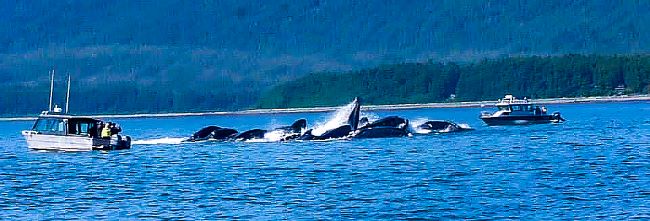
For us, departing Whittier via cruise ship marks the beginning of a memorable adventure, not just a simple goodbye. Starting our retirement is incredibly enjoyable as we admire the most breathtaking and untamed scenery on the planet. Prince William Sound is magnificent.
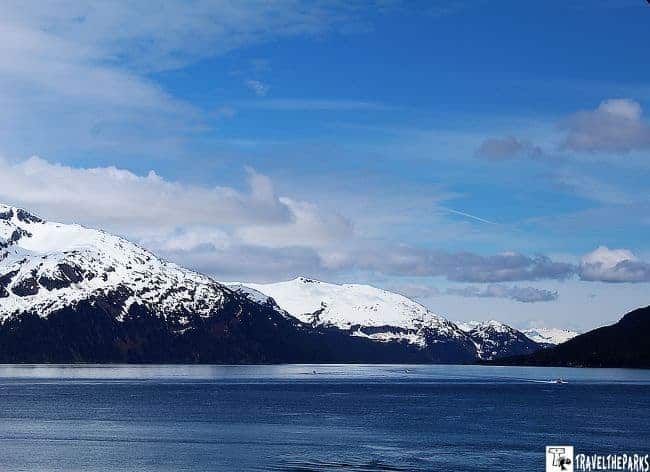
Day 2: Unforgettable Inside Passage Cruising, Hubbard Glacier
Our first morning, we enjoy a hearty breakfast. The ship won’t arrive at Hubbard Glacier until late this afternoon. We spend most of our day on deck looking for whales. Today, we make time to experience some of the scheduled amenities. When you’re on a cruise ship at sea for the day, one of the most exciting times of the day is tea time. As we find a table in the dining room filled with chatter, we indulge in delicious treats. The waitstaff serves the tea in fancy teacups. Meanwhile, the waitstaff arranges the treats on tiered stands in a beautiful display. We start by nibbling on sandwiches with fancy fillings like salmon or cucumber. Taking a moment to savor life’s simple pleasures was nice.

The Story of Hubbard Glacier
You can only reach this massive glacier by boat, and only a limited number of vessels make the journey each year. It was named Hubbard Glacier in 1890 in honor of Gardiner Hubbard, the first president of the National Geographic Society. The glacier is fed by ice fields located high in the Centennial Range of the Saint Elias Mountains, at elevations around 11,000 feet.
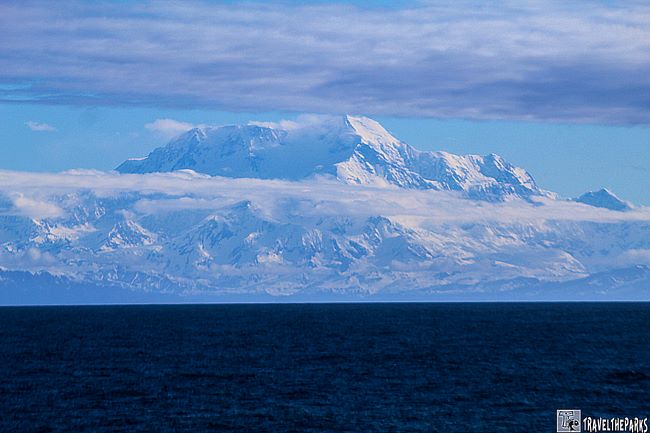
Hubbard Glacier is the largest tidewater glacier in North America, spanning 6 miles in width and over 300 feet in height. Hubbard Glacier is a rarity; in these warmer times, it is still advancing, sometimes an incredible 7 feet per day. This glacier meets the sea about 16 miles into Disenchantment Bay and about 32 miles into Yakutat Bay on the coast of the Gulf of Alaska.
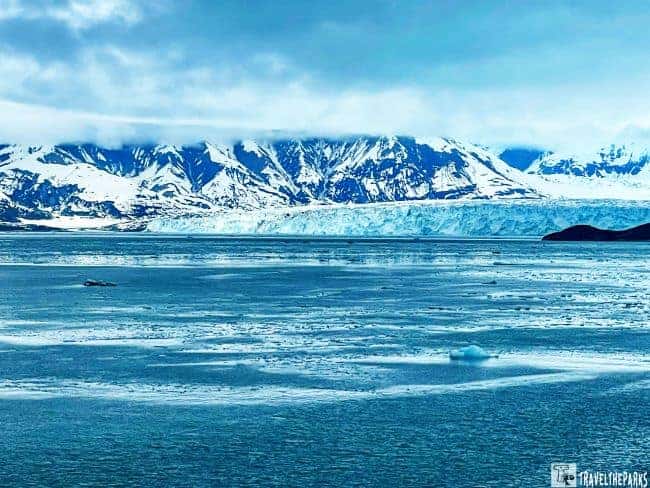
Witnessing Nature’s Frozen Power: Hubbard Glacier
How could the sheer size of this glacier not overwhelm someone? Pictures do not convey the full story. To ensure that everyone could see the glacier in all its grandeur, the captain turned the ship in all directions, bringing us as close to the glacier as possible for optimal photographs. The sight of the vivid blue hues of the ice is what will stick with me forever. The sound of the ice cracking off the glacier was audible to us, like a thunderclap. A few chunks of ice broke off the glacier today. We got chills from listening to the sound of the ice breaking and echoing over the ocean from a mile away. Here we stop because of the numerous small sea ice and growlers that block the entrance to the glacier’s face.
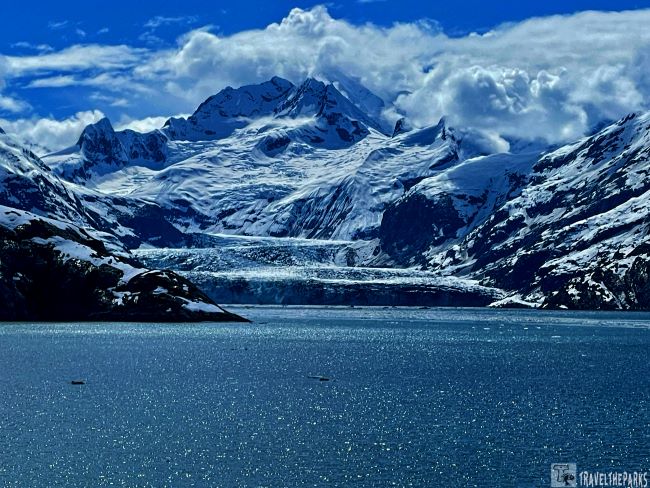
Day 3: Glacier Bay National Park: A Wildlife-Rich Scenic Cruise Through Alaska’s Pristine Fjords
The only way to view this stunningly beautiful park is by boat or ship. Today, our cruise ship spent the majority of its time cruising Glacier Bay National Park. This is a must-visit site for everyone viewing Reid Glacier, Lamplugh Glacier, Johns Hopkins Glacier and the Margerie Glacier. As we moved through the Ice Strait channel, I spotted plenty of sea otters. They are hard to photograph with my camera, as they quickly dive as the ship approaches. We saw multiple humpback whales, puffins, stellar sea lions and harbor seals.
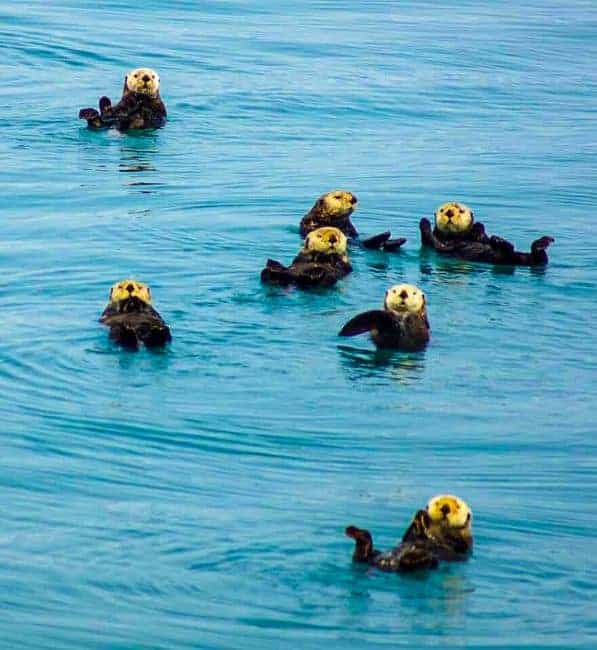
We had rangers from Glacier Bay National Park board our ship at Bartlett Cove. They set up a mini visitor center, provided us with passport stamps and a narrative for each of the glaciers as we passed by. As we move further into the bay, you will find yourself constantly reaching for your camera to capture every unforgettable moment. As we pass the Marble Islands, we spot mountain goats on the cliffs. Snow-capped peaks, which rise several thousand feet above the waterline, surround the bay’s blue waters. A variety of birds, mountain goats, and other mammals find their homes in the lush evergreen forests that cover the shoreline. For me, being able to witness this wonder of the world was truly an experience that words cannot fully describe.
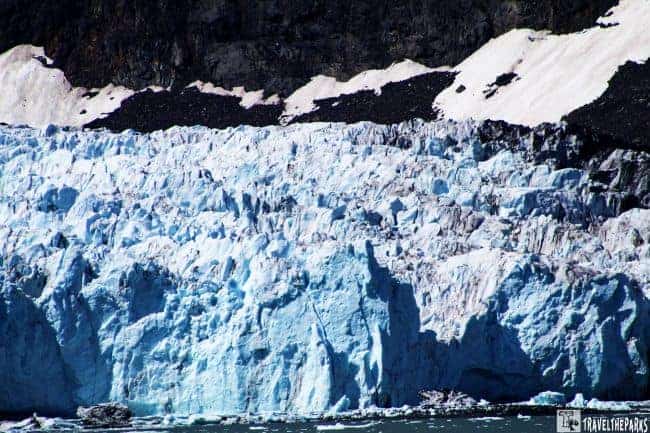
Contrasting Giants: The Active Margerie and Receding Grand Pacific
As our cruise ship entered Tarr Inlet, we slowly approached the magnificent Margerie Glacier. Almost immediately, we felt the blast of icy air rolling off its towering face. The scenery was absolutely breathtaking. Margerie is one of the few advancing glaciers in Alaska, making it one of the best places to witness calving in action — and it didn’t disappoint.
We watched in awe as massive chunks of aquamarine ice cracked, groaned, and finally thundered into the fjord. I managed to capture only one calving event on camera, but we saw several throughout our visit. The deep rumble that echoed across the water was both thrilling and humbling.
Our captain aboard the Nieuw Amsterdam ensured everyone had a perfect vantage point, skillfully turning the ship so guests on both sides could enjoy unobstructed views. All the while, the dramatic Fairweather Range loomed behind us, with the 15,300-foot Mount Fairweather rising majestically above the glacier — a scene worthy of every superlative.
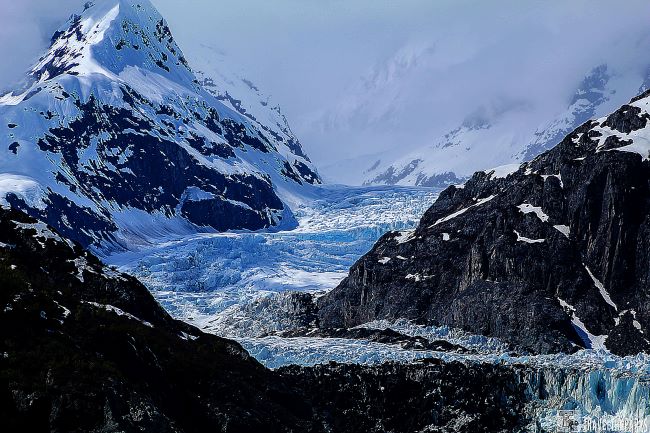
In stark contrast to the brilliant blues of Margerie, the nearby Grand Pacific Glacier appears almost entirely black. Originating in Canada’s St. Elias Mountains, this massive, two-mile-wide glacier is heavily laden with silt, gravel, and rocky debris, giving it its dark, rugged appearance. Although we did see a calving event, Grand Pacific is currently a receding glacier, steadily retreating and depositing its load of rock and earth along the way.
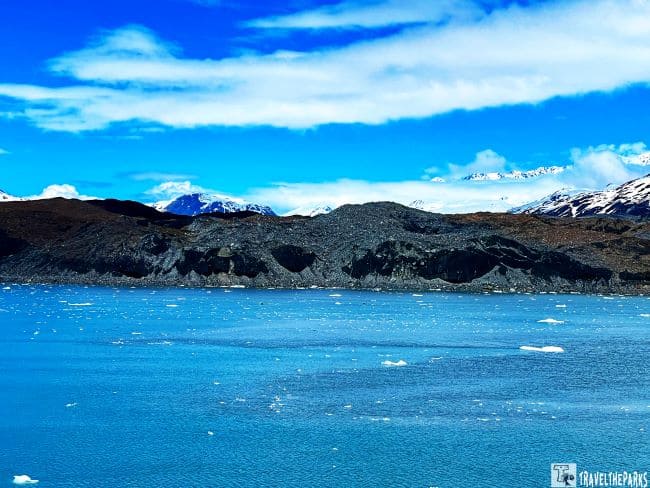
More Tidewater Glaciers: Lamplugh and Johns Hopkins
The ranger commentary pointed out that only 0.1% of the over 1000 glaciers in Glacier Bay are tidewater glaciers. The Lamplugh Glacier in Johns Hopkins Inlet is receding at a dramatic rate. Descending from the Brady icefield in 2015, the glacier experienced a massive landslide. From a nearby mountaintop, 120 million metric tons of rock fell onto the glacier. Much of the glacier’s face no longer reaches the inlet.
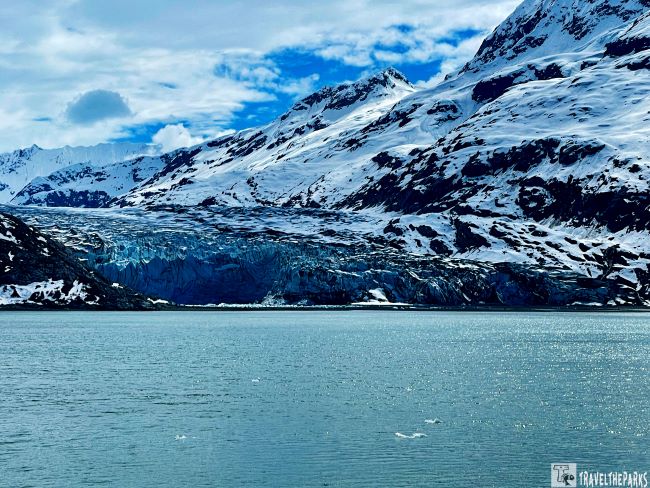
We had to stop a couple of miles short of the John Hopkins Glacier as it is a protected preserve for the harbor seals and their pups. Using binoculars, we could see moms and offspring resting on ice floes.
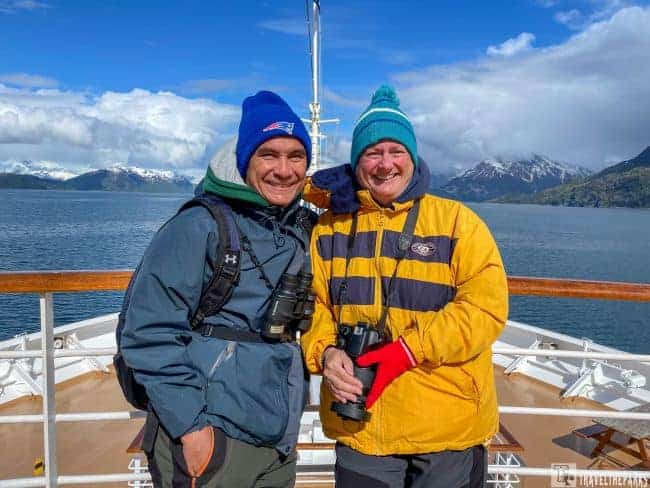
Day 4: Skagway, Alaska: Glacier Bay to Gold Country: Ultimate Alaskan Cruise Highlights
Unfortunately, today will be a solo excursion for me. Barry is out of commission today because of a virus. I am bound and determined not to miss the train excursion.
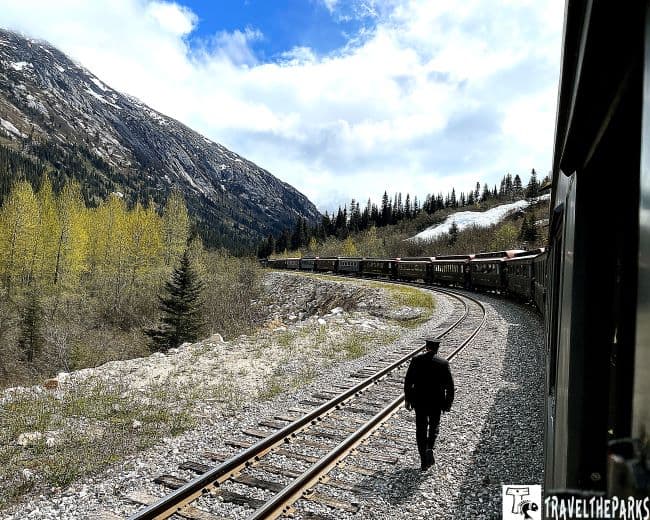
A Historic Train Adventure on the White Pass & Yukon Route
You can’t pass up the White Pass & Yukon Route Railway journey to the mountain summit if you’re sailing into Skagway. The train climbs the mountain pass until it reaches the summit, then loops around before returning down.

I’ve chosen a strategic spot–the very last car, the left side. The interior of this vintage train car. I admire the polished wood paneling and the worn brass fixtures. With a brief whistle from the train’s engine, we begin our ascent towards White Pass. The train quickly gets into a rhythmic clickety-clack. I wait for the conductor to give the all clear, and I quickly move through the open doorway, leaning over the rail. Yes, it is cold, but the outside landscape is breathtaking. Lush pines roll past, occasionally interrupted by the sounds of cascading waterfalls.
Tips for Visiting: Dress in layers: The weather can change quickly in Alaska, so it’s best to be prepared for varying conditions. Bring a camera: to take all those great panoramic shots.
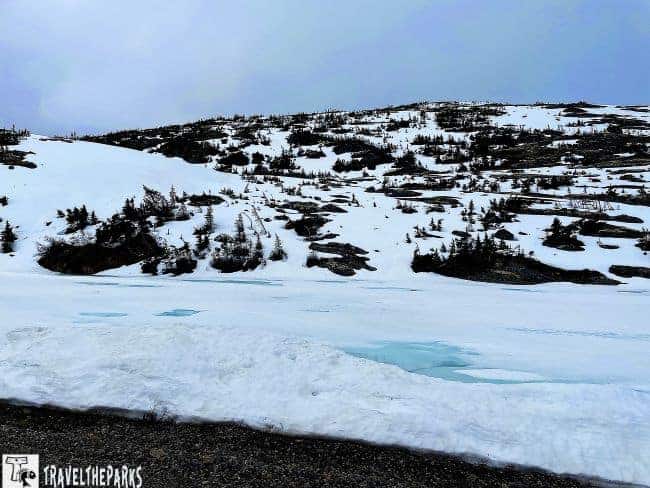
Climbing to Breathtaking Vistas: The Ride to the Summit
For me, it was reminiscent of the Klondike gold rush, bringing to mind Jack London’s story of the journey from “Call of the Wild.” A stark reminder of all those pioneers looking to “strike it rich” first having to climb this mountain. Many who tackled the Klondike Trail of ‘98 were unprepared for the hardships of this wilderness. From my vantage point at the back of the train, I can see the ribbon of track snake on its way up the incline. In one instance, we stopped so that a train moving down the track could bypass us. With the strain on the locomotive and the ascent becoming increasingly difficult, we almost came to a halt. The terrain has changed drastically. Our landscape has now become dominated by frozen tundra and glacial lakes that are just now thawing. Returning down the mountain, the sun finally begins to shine.

Remembering the Past: Gold Rush Cemetery
I had ample time after the White Pass Train, that I decided to ride the shuttle to the Gold Rush Cemetery. An uncrowded hidden gem. The oldest cemetery in Skagway dates back to the 1800s. From the cruise dock, it is a 1.5-mile walk one way. Wear good walking shoes. The two well-known individuals buried here are law enforcement officer Frank Reid and con artist Jefferson “Soapy” Smith. They enlisted Frank Reid to take care of “Soapy” and make him leave town. A gunfight occurred, resulting in the deaths of both individuals. Frank Reid has a large stone monument, while Soapy Smith has a wooden marker. Behind the gravestones, you must do the short walk along a narrow path up to the beautiful Lower Reid Falls. The falls are beautiful in the spring.
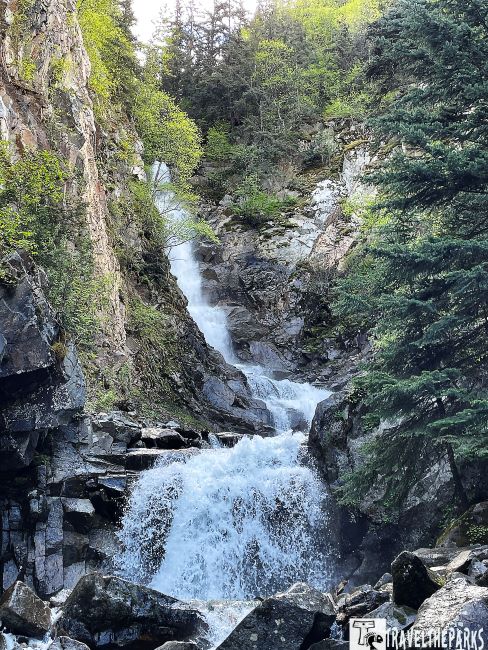
TIP: The SMART bus shuttle (one with the red strip on it) is $5 for a one-way ride to the cemetery. You can pay at the Fairyland Gift Shop. I was the sole occupant, both coming and going. I learned a lot of history just by talking to the driver.

Stepping Back in Time: A Wander Through Historic Skagway
Shgag̱wéi (Skagway) is a Tlingit name, meaning “roughened-up waves” or “suddenly rough water,” and referring to the surf caused by gale force winds in the inlet. Returning via the shuttle, I spent the rest of our time in Skagway enjoying a pleasant stroll on State Street and Broadway Street. This “Old West” historical charm town with its plank walkways invokes a feeling of yesteryear. Making my way down State Street and Broadway Street making stops at colorful storefronts, was a great way to end my day. The Red Onion Saloon, Centennial Statue, Arctic Brotherhood Hall, Goldrush Museum and Captian Moore’s cabin are all worth a look-see. Make a stop at the Klondike Gold Rush National Historical Park for your national park passport stamps.
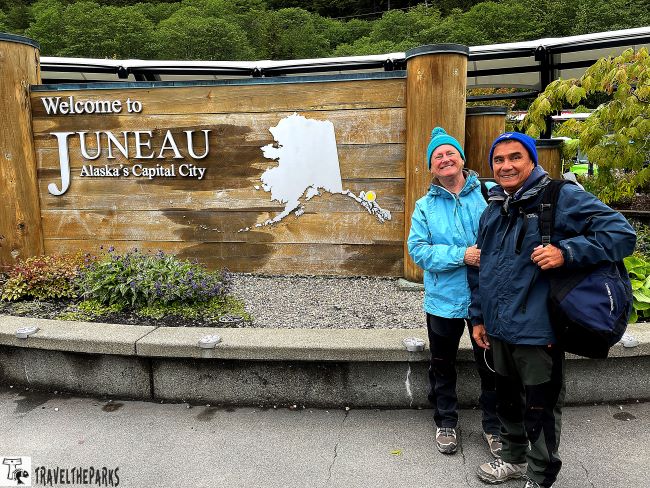
Day 5 Juneau, Alaska: Whale Watching, Glacial Wonders & Unforgettable Adventures on Your Alaska Inside Passage Expedition Cruise
The capital city feels very different from Skagway. The capital city, Juneau, has a more modern feel with a mix of historic and contemporary architecture. It is also the political and administrative center of Alaska, so it would naturally have some newer government buildings and museums.
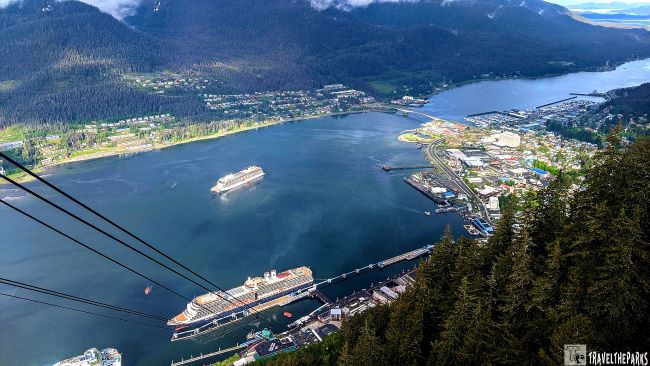
A Bird’s-eye View of Juneau: The Goldbelt Tramway Experience
We were worried when we booked this that we would run out of time after our glacier visit. The tramway base station is close to the cruise dock. The ride up to the top of the 1800 foot Mount Roberts was a quick 5-6 minutes. Arriving at Mountain House, it serves as the visitor center. Many of the exhibits showcase the Tlingit culture with storytelling, traditional music and dances. Outside, there are nature trails that have phenomenal views of the Gastineau Channel and the many cruise ships below. At the nature center, we found information that helped us to identify some wildflowers we saw on the trail. Not wanting to miss our morning tour of Mendenhall Glacier, we made the return trip down to the cruise terminal. The tram operator pointed out a lone bald eagle sitting in a nest.
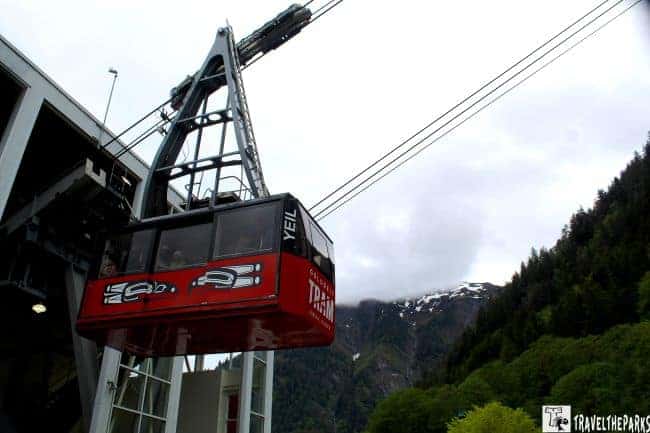
TIP: Most days, there will be multiple cruise lines in port. We recommend doing the tramway early as I have read horror stories of 2-hour lines to return down the mountain. Sometimes missing the cruise ship departures.
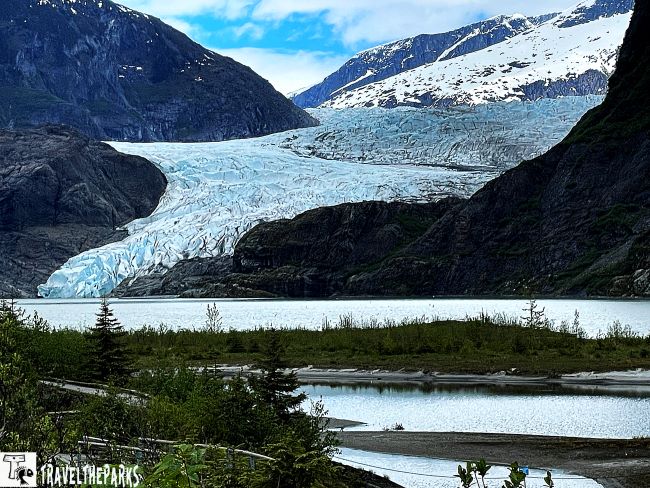
Cruise Tour: Exploring Mendenhall Glacier a Bucket-List Adventure
The Mendenhall Glacier in the Tongass National Forest is a must-see when visiting Juneau. This glacier is part of the larger Juneau Icefield, which encompasses around 1,500 square miles of ice and snow. It is just one of the most accessible glaciers in Alaska. Fortunately, we have already had the chance to witness Exit Glacier, Worthington Glacier and Matanuska Glacier. We were a little disappointed you cannot actually get up close and personal with this glacier. Despite the distance, the view of Mendenhall Glacier is still breathtaking.

We booked our excursion on the cruise ship. On the ride out to the glacier, our driver added a narrated overview of the sites along the way. He added a few local stories, adding a bit of humor. Once we arrived at the glacier, we immediately headed right out on the 1-mile walk on a paved path to Nugget Falls. On this excursion, you only have a limited time at the glacier, and we wanted to make the most of it.
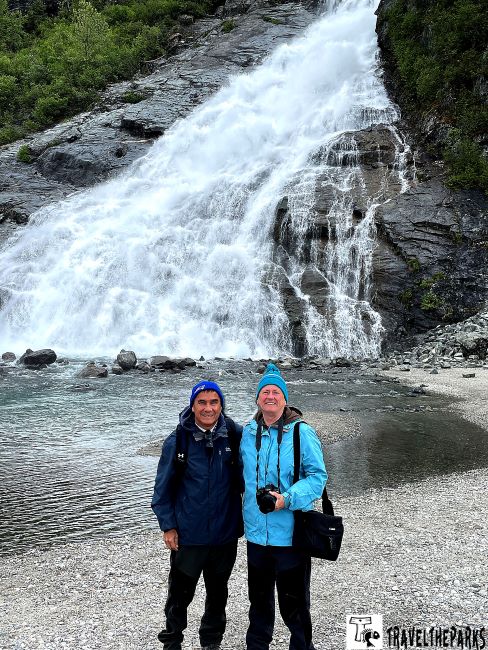
Nugget Falls Trail: An Easy Hike to a Scenic Alaskan Waterfall
The Nugget Falls trail meanders through the Tongass National Forest. A lush carpet of emerald ferns, mosses, and spring wildflowers fills this rainforest, punctuated by fallen logs draped in green. In the canopy, we see a lone porcupine high in a cottonwood tree. A favorite food source with their sharp claws, they can easily climb the tall trees to reach the leaves, twigs, and bark that they love to eat.
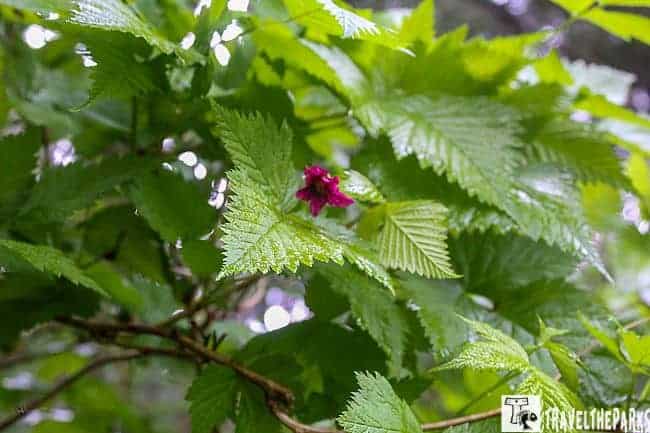
Nugget Falls originates from the meltwater from the glacier. It falls an impressive 377 feet over two tiers into Mendenhall Lake. We could hear the roar of the water well before we arrived at the base of the falls. Getting our photo op, we made the return trip to the glacier overlook with a quick detour to the visitor center before catching the return bus.
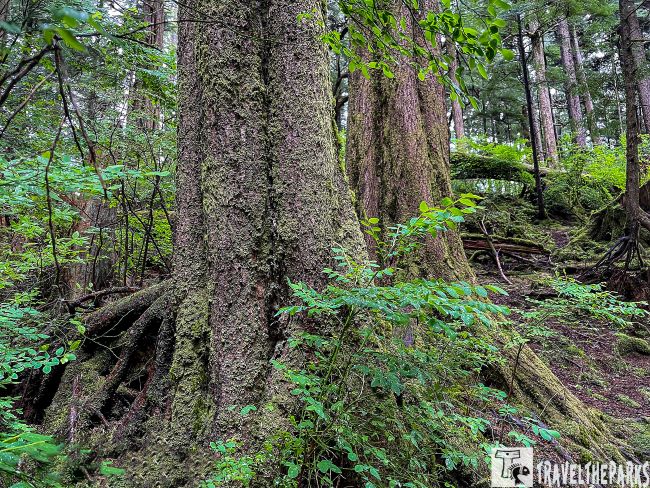
Day 6 Ketchikan, Alaska: From Totem Parks to Misty Wilderness: The Ultimate Alaska Cruise Experience
Arriving in port today, low-hanging clouds and misty rain . Looking out our ocean view window at the Ketchikan waterfront, we see a colorful jumble of buildings lining the harbor. First thing you notice is the sign on Main Street declaring Ketchikan as the Salmon Capital of the World.
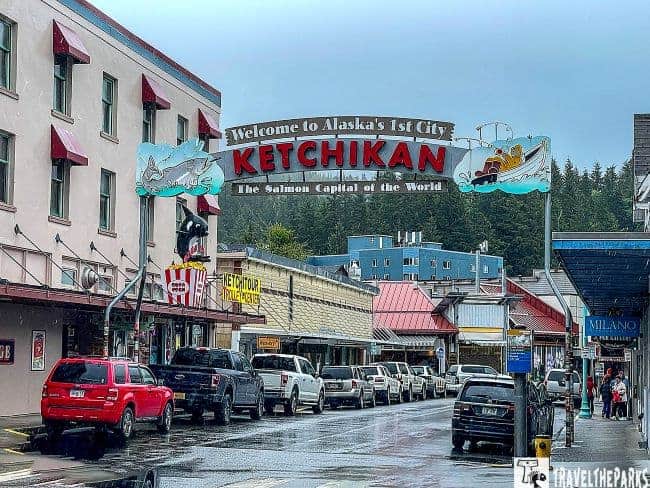
Exploring the Enchanting Ketchikan: Stroll Creek Street
Our first destination this morning is a trip to Creek Street, a historic district known for its totem poles, one of a kind shops and risque bordellos (1903-1954),. It was interesting to learn that independent women ran and often worked at these establishments. Dolly’s House, a restored brothel, has a fascinating self-guided tour ($10). I won’t spoil the fun by describing some of the more bawdy artifacts.
Rain slicks the elevated wooden boardwalks along the river as we make our way along the “Married Man’s Trail” toward the fish ladder. This hidden pathway, cloaked in a veil of dripping foliage, afforded us a glimpse into Ketchikan’s bawdy past. The fish ladder bypasses a series of small waterfalls. Later in the spring, this river will be teeming with salmon, making their way upriver to spawn.
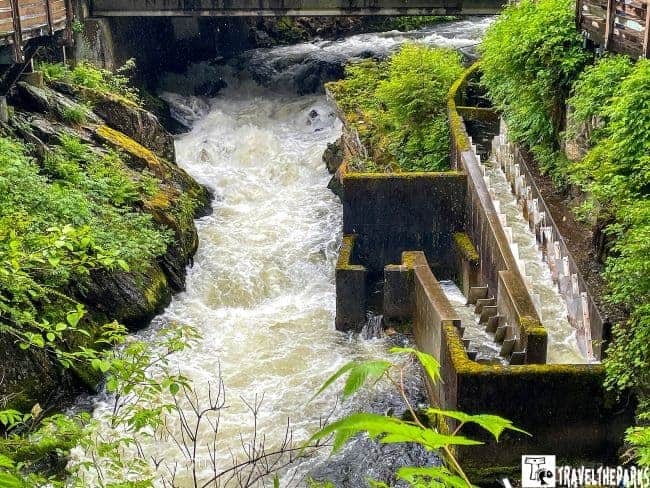
Exploring Ketchikan’s Rich History: Tongass Historical Museum
With ample time left in our schedule before our next excursion, we head to the Tongass Historical Museum, giving us a reprieve from the constant downpour. There is a minimal charge to see the displays. The exhibits cover the Klondike Gold Rush era, the Tlingit people, and the industries that have shaped Ketchikan’s development. Among the many artifacts on display, we found equipment used in mining, logging, and the local fish cannery. One of the most memorable exhibits was “A Woman’s World,” which highlights the life of Dolly Arthur. Be sure to take your time with this section — the details in the accompanying artifacts are well worth a closer look.
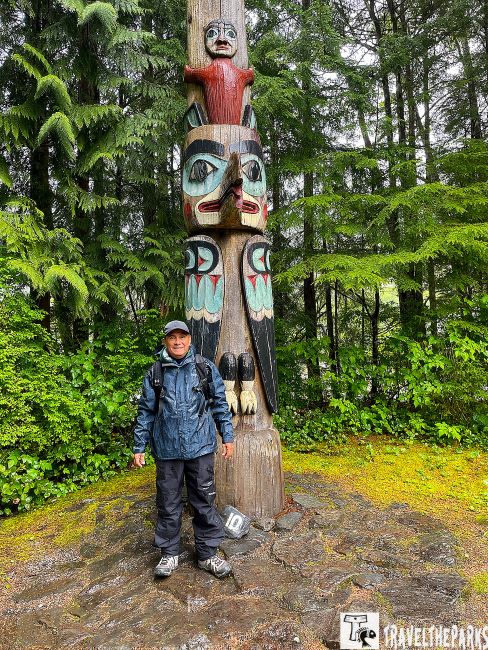
A new exhibit, “On the Edge-Stories from Ketchikan’s Working Waterfront,” highlights the vital role that waterfront industries play. It’s an intimate look at the community and the economics of Ketchikan today.
TIP: The $6 entry fee for the museum. The combination ticket also gains you access to the Totem Heritage Center.
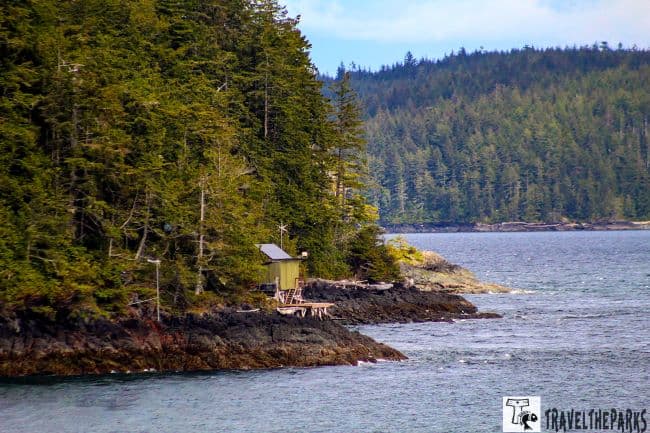
Exploring the Totems of Totem Bight State Historical Park
By mid-morning, we joined our cruise tour group and headed to Totem Bight State Historical Park. Here, we spent time admiring the beautifully carved totem poles — each one rich with symbolism and cultural storytelling. It’s a remarkable place to learn about the deep heritage of the Tlingit and Haida peoples.
Exploring the reconstructed clan house was especially impressive. Built from massive spruce and cedar logs, some intricately carved with ravens, eagles, and other meaningful figures, the structure reflects stories of ancestry, lineage, and prominent individuals within the clan. Our guide shared fascinating insights about daily life inside the longhouse, helping us imagine how generations once lived within its timbered walls. The clan house truly served as the heart of the community.
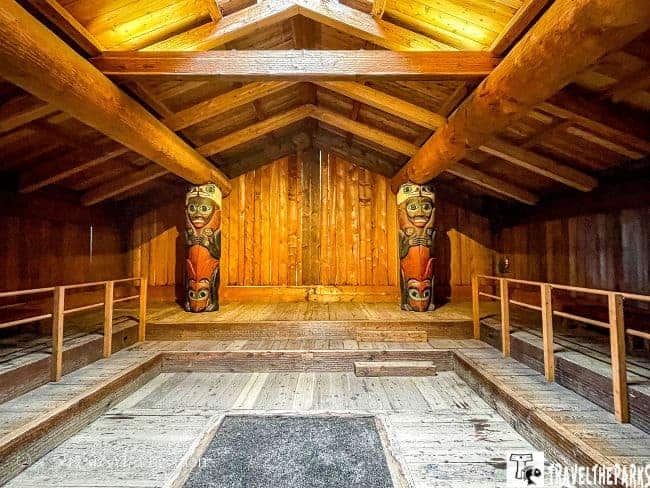
Outside, our tour guide explained the history and meaning behind each of the totem poles on our walk. I am so glad we have time to explore the verdant forest paths and the bay, even in the pouring rain. The Alaska Totem Trading Store has native artifacts made by local carvers.
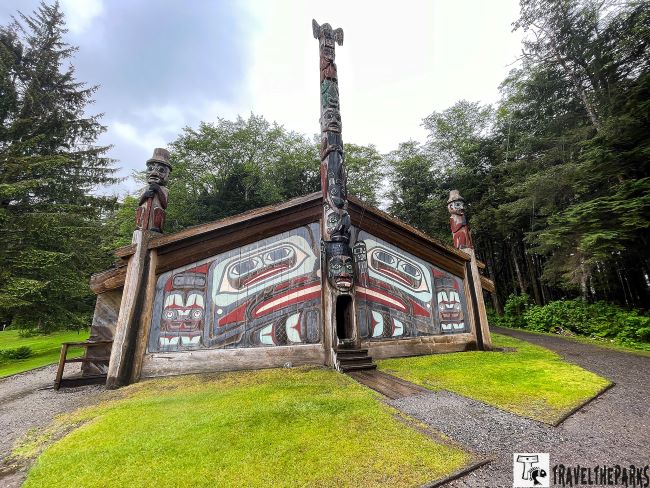
As the day comes to a close, we savor delicious seafood at a nearby eatery. Finally, before boarding, I take one last look at the vibrant harbor scene. Small boats in the fishing harbor, the many totem poles, silent sentinels carved by the Tlingit people, and the colorful waterfront stores. This truly embodies the dynamic maritime heritage of Ketchikan.
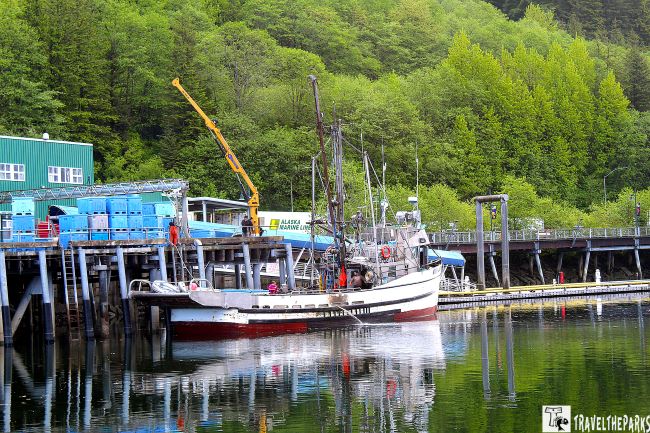
Day 7: Scenic Cruising the Inside Passage: Glacier Memories on Your Unforgettable Inside Passage Cruise
It’s our final morning waking to the gentle sway of the ship. Through our window, the breathtaking Inside Passage stretches out before us. The sun is just beginning to break through the clouds, casting a soft, golden glow across the glassy waters. Today, I plan to spend most of the day on deck, scanning for wildlife. The calm waters of the passage are ideal for spotting an array of marine life — from whales and dolphins to sea lions and playful otters — making it a paradise for any nature enthusiast.
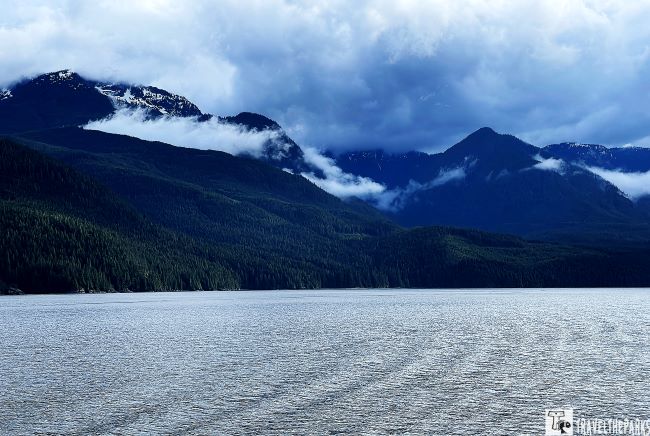
Heading to the Lido deck, I can see a historic lighthouse standing sentinel on a rocky point. Grabbing a quick bite, we find a table by the pool so we can continue our lookout for whales. It is not long before I spot the telltale spout of a humpback. A small pod slicing through the water headed in the opposite direction. I find it almost impossible to anticipate where they will rise next. It makes photographing them incredibly difficult. Alas, I realize that taking pictures of them isn’t important. Just being in the moment is all that matters.
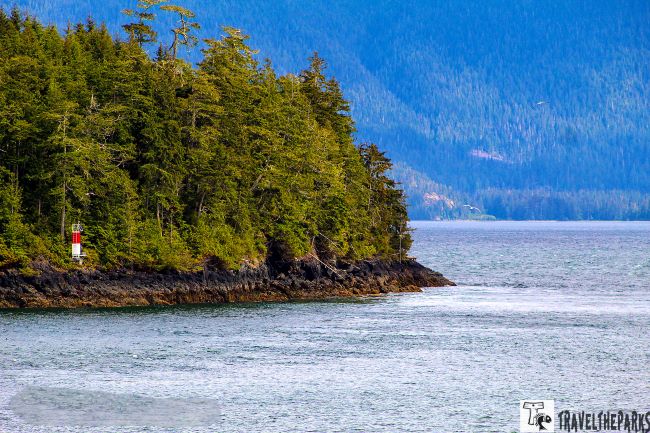
A Final Day of Epic Landscapes: The Calm Waters of the Inside Passage
Finishing breakfast, we find the perfect place on Deck 3 that is protected from the chilly wind. I take a moment to relax on a deck chair, taking in the breathtaking panorama. Evergreen rainforest islands surround us. The rugged, snow-capped peaks of the coastal mountains rise everywhere. The moss-laden trees reach all the way to the shoreline. It is breathtaking, truly a sight to behold, don’t you think? As we get closer to Vancouver, we see more signs of civilization. Villages, fishing boats, and lots of lumberyards.
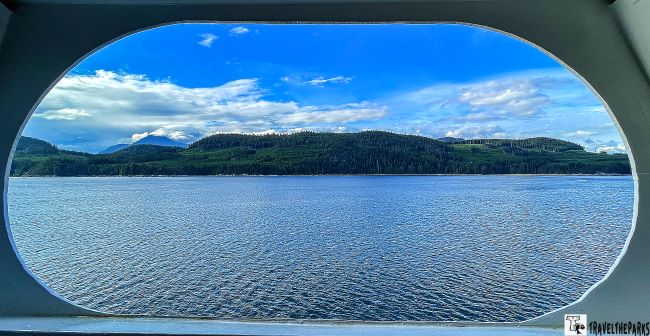
Today, we also took some time to enjoy a few of the shipboard amenities. We sampled a rum tasting, attended an engaging wildlife talk led by a naturalist, and browsed a fun T-shirt sale. Before retreating to our room to pack, we made one last leisurely stroll around the deck, soaking in the views and savoring the last moments at sea.
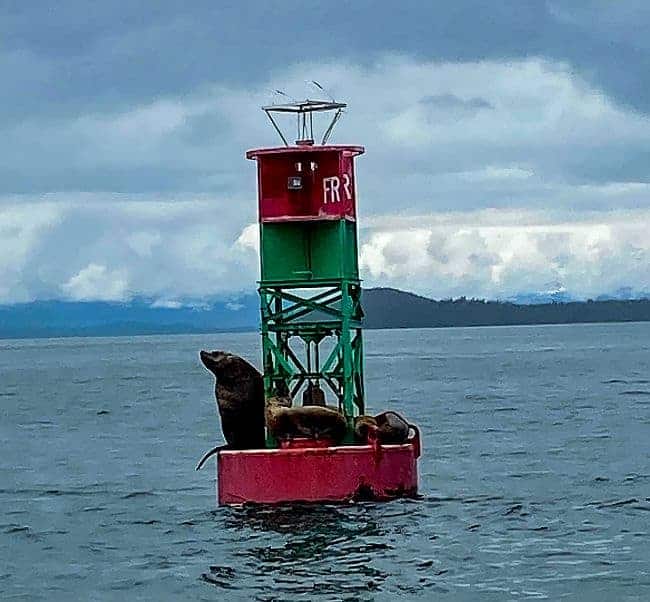
Final thoughts: The Ultimate Cruise: Journey Through The Beautiful Inside Passage
Entering the port of Vancouver, rainy weather. Melancholy, we are homebound today. It is bittersweet, but I know we will return to Alaska again. Our first cruise, but I am sure it will not be our last.
Cruising Alaska is truly an unforgettable adventure. There’s only one Alaska, and we can’t get enough of its sheer beauty. I am struggling to find the words to explain the grandeur of what we have seen and experienced. Alaska will stay with you forever!
Have you been on an Alaskan cruise? What did you like best about the trip? Share your thoughts in the comments below.

